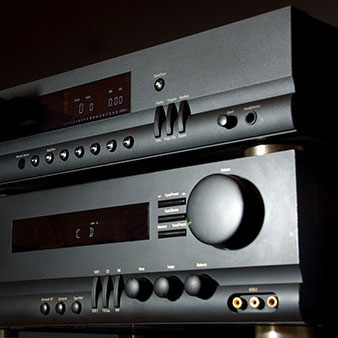Meanwhile, back to the OP's actual query about a Powernode 3 (N330) vs. his Onkyo TX-8150 Stereo receiver for sound quality and streaming functionality...
FWIW, here's my take:
Regarding the DAC devices used, it would seem (on paper) to be a draw...
In the Onkyo = AKM4452 specs:
115dB 768kHz / 32-bit 2 ch Premium DAC The AK4452VN is a new generation of premium 32-bit DAC, with 8 channels of AKM’s VELVET SOUND architecture that has been widely adopted by well-established high-end audio companies.

www.akm.com
In the Powernode 3 = T.I. (Burr Brown) PCM5242 specs:
Regarding the comparison of power amp sections, the class AB amp of the Onkyo has the optimistic power rating of 135W in one channel, not 2, @ 6 Ohms @ 1 KHZ @ 1% THD -- I'd be surprised if the 80W/CH Ncore based power amp of the Powernode3 didn't outperform the Onkyo power amp by a substantive margin, but Amir's jury is still out on this comparison...
On subwoofer integration, the Powernode3 wins -- if the OP ever decides to add a Sub to his Monitor Audio speakers:
-- the Onkyo has no High Pass filtering for it's main amplifier channels, and the mono "Subwoofer Pre Out" is just literally a full range mono analog output controlled by the main volume control
-- the Powernode3 offers DSP based High Pass crossovers for it's amplifier channels and an adjustable Low Pass crossover for it's mono Subwoofer output. (the T.I. PCM 5242 DAC has a DSP based programmable xover/bass mgmt function)
Regarding streaming services and capabilities, BluOS gives you Tidal, Qobuz, and Amazon HD for your "HiRes" streaming, and Spotify Connect for Lossy/compressed content. Maybe someday Spotify will offer Lossless, I think it'll be a long wait, seeing how Amazon and Apple Music have fared with their Lossless & HiRes rollouts...
For the Onkyo, it's streaming facilities are pretty dated, Deezer being the only Lossless option -- unless you count Airplay's 16/44 content, so again the Powernode3 wins.
And of course Roon -- not as big an issue IMO...
So...for $900 bucks, I think the Powernode3/Powernode 2021/N330 -- whatever, is a good upgrade from your Onkyo.


